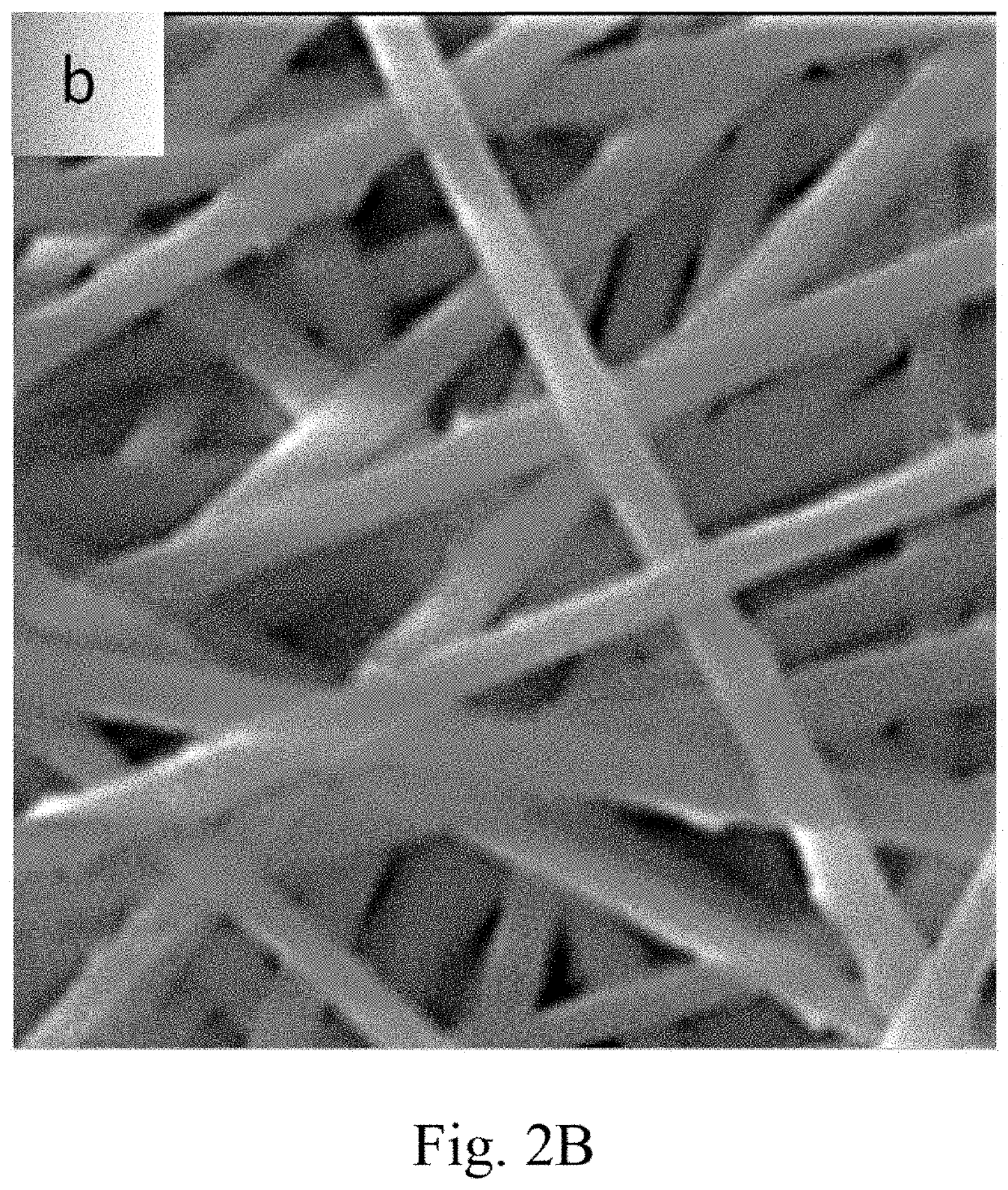Hybrid membrane and method for separating oil and water
a hybrid membrane and oil technology, applied in the field of emulsions, can solve the problems of degrading membrane performance, affecting the performance of membranes, and insufficient effectiveness of treating oily water mixtures,
- Summary
- Abstract
- Description
- Claims
- Application Information
AI Technical Summary
Benefits of technology
Problems solved by technology
Method used
Image
Examples
example
[0056]Materials: polyacrylonitrile (PAN) with weight-average molecular weight (Mw) of 150,000 g / mol and N,N-dimethylformamide (DMF, 99.8%) were purchased from Sigma Aldrich (USA) to prepare the electrospinning solution. Silica nanopowder (SiO2) with average particle size of 12 nm was purchased from Sigma Aldrich (USA) while graphene oxide (GO) with flake size in the range of 0.3 to 0.7 microns with carbon / oxygen ratio of 4:1 was purchased from Graphene Supermarket (USA). All chemicals were used as received without any further pretreatment. Deionized (DI) water was obtained using a Millipore Milli-Q® water purification system for purposes such as rinsing, cleaning, and dilution. Distilled water and lubricating oil from Shell were used for making the oil-water emulsion.
[0057]Fabrication of PAN composite and hybrid membrane: Using a using Nanon-01A (MECC Japan) electrospinning setup, PAN, PAN-SiO2, PAN-GO, and PAN-GO-SiO2 membranes were prepared by first dissolving desired amounts of P...
PUM
| Property | Measurement | Unit |
|---|---|---|
| Temperature | aaaaa | aaaaa |
| Fraction | aaaaa | aaaaa |
| Time | aaaaa | aaaaa |
Abstract
Description
Claims
Application Information
 Login to View More
Login to View More - R&D
- Intellectual Property
- Life Sciences
- Materials
- Tech Scout
- Unparalleled Data Quality
- Higher Quality Content
- 60% Fewer Hallucinations
Browse by: Latest US Patents, China's latest patents, Technical Efficacy Thesaurus, Application Domain, Technology Topic, Popular Technical Reports.
© 2025 PatSnap. All rights reserved.Legal|Privacy policy|Modern Slavery Act Transparency Statement|Sitemap|About US| Contact US: help@patsnap.com



